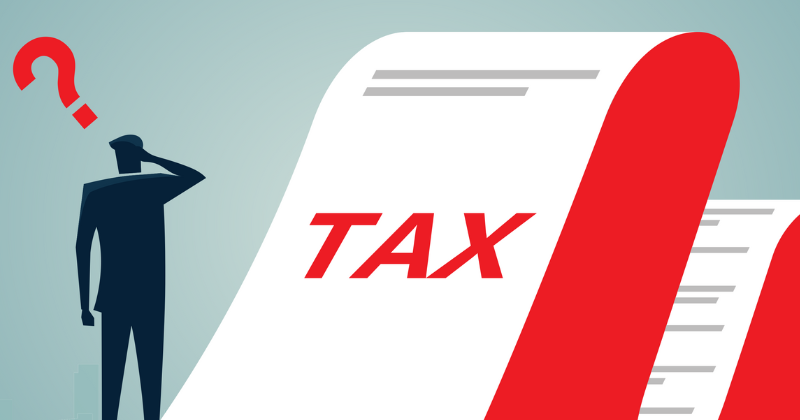Disability may present to an individual the challenge of the high cost of independent and sustainable living. For instance, the cost of acquiring or replacing an assistive device, which is integral towards enabling inclusion, is usually expensive beyond a person’s capacity to sustain. It is such costs that tax exemption for Persons with Disabilities (PWDs) is intended to alleviate. This article focuses on the procedure to be followed by PWDs when seeking an exemption from income tax. In particular, we will review whether vetting PWDs has any significance when applying for such an exemption.
Background
PWDs are amongst the few groups of individuals entitled to exemption from income tax. Provision for this tax relief is found under sections 12 (3) and 35 (1) and (2) of the Persons with Disabilities Act, 2003 (the PWD Act).
The grant of this and other exemptions prescribed under the PWD Act is subject to the requirements outlined in section 42 (1) of the PWD Act. In the context of income tax, these requirements include:
- Mandatory recommendation by the National Council for Persons with Disabilities (the Council).
- Approval by the Kenya Revenue Authority (KRA).
- Satisfying the requirements and conditions set out in the regulations by the Cabinet Secretary responsible for matters relating to finance (the Cabinet Secretary).
- Discretion of KRA to refuse exemption on the basis that it has not been provided for in the allocation of public resources.
A reading of these provisions yields the conclusion that the fact of disability alone does not avail an automatic relief to a PWD. It further suggests that exemption from tax on grounds of disability is a legal privilege as opposed to an absolute right, but only to the extent provided for under section 42 of the PWD Act. Pursuant to section 35 (2) of the PWD Act, which enables the Cabinet Secretary to prescribe the procedure for the application and grant of exemptions under the PWD Act, the Persons with Disabilities (Income Tax Deductions and Exemptions) Order, 2010 (the Order) was promulgated. Order 4 (3) thereof provides that the Council is required to establish a committee whose members shall include a medical doc- tor for the purposes of vetting applications for exemption.
In order to apply for an exemption, a PWD must be registered with the Council to facilitate the issuance of a Certificate of Disability in accordance with Regulation 7 (1) of the Persons with Disabilities (Registration) Regulations, 2009 (the Regulations). The process leading to the issuance of the Certificate of Disability calls into question the necessity of verifying PWDs before recommending tax exemption. To appreciate this point of view requires an understanding of the process of registering as a PWD.
Registration Process
Registration of PWDs is provided for under section 7 (1) (c) (i) of the PWD Act, as read together with Regulation 5 (2) of the Regulations. Pursuant thereto, an applicant is required to attend an interview, a medical examination, and any other assessment that the Council may consider necessary. In connection with this, the Council has put in place a Service Charter that stipulates, amongst other things, the application guidelines for PWD registration (the Guidelines). Based on the Guidelines, an applicant is required to submit to the Council a duly filled application form attaching a Medical Assessment Report (Medical Report) signed by the Director of Medical Services and a passport-sized photo.
The Medical Report acts as an advisory as to whether a person has a condition that may qualify as a disability, in which event the Medical Report proposes the necessary recommendations for assistance. Following the presentation of these documents to the Council, the Council conducts a compliance check. If the requirements are met, the person is registered by the Council on the same day and issued a Certificate of Disability, which is valid for a period of five (5) years renewable as provided for. The benefits accrued from such certification include free access to assistive devices; education assistance; economic empowerment projects comprising local purchase/service order financing; provision of tools of trade as well as grants to PWD dominated self-help groups; provision of protective facility e.g., sunscreen for those with albinism; and tax exemption.
the person is registered by the Council on the same day and issued a Certificate of Disability, which is valid for a period of five (5) years renewable as provided for. The benefits accrued from such certification include free access to assistive devices; education assistance; economic empowerment projects comprising local purchase/service order financing; provision of tools of trade as well as grants to PWD dominated self-help groups; provision of protective facility e.g., sunscreen for those with albinism; and tax exemption.
Application for Tax Exemption
As stated above, the process of registration as a PWD and the application for tax exemption once such registration is complete, are two (2) different legal processes. Similar to PWD registration, applying for a tax exemption begins with the submission to the Council of a duly filled application tax exemption form, attaching copies of the following documents: medical report signed by the Director of Medical Services; KRA PIN Certificate; National Identification Card; KRA remittance documents (for those in informal and self-employment); latest pay-slip; and a letter from the employer.
To renew an exemption, one is advised to apply three (3) months be- fore the expiry date. The application for renewal is predicated on the same documents, with an addition of the expired exemption certificate. The Persons Living with Disability – KRA Guidelines on Tax Exemption for PWDs (the KRA Guidelines) also require an applicant to be in receipt of taxable income under the Income Tax Act and to include a Tax Compliance Certificate in the document attachments. The KRA Guidelines also cite the PWD Act and the Order as the legal basis for PWD income tax exemption.
Upon receipt of the application, the Council establishes a committee that includes, among others, a medical doctor to review the application. The Council then submits a recommendation to the KRA Commissioner (the Commissioner) by uploading the application through KRA’s iTax system on the applicant’s behalf. If the upload is successful, a system-generated acknowledgement number is emailed to both the applicant and the Council. The Commissioner reviews the application so as to determine whether to grant the exemption, and he is required to make a decision within thirty (30) days of receipt of the recommendation.
Where an exemption is granted, the Commissioner issues the applicant with a Tax Exemption Certificate valid for three (3) years. However, it is noteworthy that the KRA Guidelines on exemption for PWD and the Service Charter set the exemption validity period at five (5) years. Where the Commissioner rejects an application, the decision is notified to both the applicant and the Council in writing.
Comparing the Processes
The steps leading to a PWD’s exemption from tax or registration with the Council are identical, to the extent that the final application is received by the Council, at which stage the applicant’s role becomes dormant. The Council then assumes the role of the initiator. The two (2) processes then diverge, with the Council deciding on registration and also acting as a recommender with respect to the tax exemption application.
The comparability of the methods in both cases makes it challenging to comprehend the rationale for vetting for tax exemption. Given the requirements of the law and the set standards, registration must come before exemption. Vetting, on the other hand, begins as the first step in recommending exemption. Given the Medical Report’s aim, which is a consequence of disability assessment (unless fraudulently obtained), and the reality of a valid certificate of disability, requiring an applicant to attend a vetting session appears to be a redundant exercise.
The foregoing analysis of the rationale for vetting of PWDs fails to disclose a strong case for its maintenance. Requiring PWDs to go through vetting for tax exemption is an unnecessary obstacle that calls for an amendment of the Regulations to discard the requirement.
Is Vetting of PWDs for Exemption superfiuous?
Various reasons lend merit to the proposition that vetting of PWDs is superfluous.
First, the disability assessment undertaken is intended to get an ex- pert opinion on whether or not one has a condition that qualifies as a disability. There are validity requirements in place to safeguard against fraud, including the limitation of assessment to gazetted government hospitals as well as the execution of the Medical Report by the Director of Medical Services. Besides, the applicant has no ac- cess to the Medical Report until it is executed and delivered to the Council for collection by the applicant. Finally, the Council issues a legitimate report to the applicant. As a result, the report provides sufficient evidence of an applicant’s disability. This, in effect, dismisses the necessity of vetting.
Second, the objective of vetting is hypothetical in the sense that it is not explicitly stated. As a result, confusion has taken root in the performance of this requirement. A case in point is the misunderstanding that the exercise empowers the Council to redefine disability for purposes of exemption, an issue which was addressed in the case of Kiramana v National Council for Persons with Disability & Another (2023) eKLR. In this case, the Court rejected the argument by the Council that the Petitioner was rehabilitated and held that the Petitioner, who had been medically certified as a person with disability, had been denied due protection of the law, dignity and respect as prescribed for persons with disabilities pursuant to Articles 27, 28 and 54 of the Constitution of Kenya, 2010 (the Constitution). The Court consequently declared the Petitioner to be a PWD within the meaning of section 2 of the PWD Act and Article 260 of the Constitution, both of which exclude the disability threshold which vetting purports to evaluate.
Third, the Kiramana v National Council for Persons with Disability case operates to estop the vetting committee from basing their recommendation on considerations outside of what the Constitution and the law provides. Equally, certification of disability following a medical assessment renders the role of a medical doctor in the vetting committee unnecessary. In any event, the Council lacks the professional competence to determine whether a person’s condition qualifies as a disability.
Finally, the Certificate of Disability issued upon registration is prima facie evidence of recognition by the Council of a person’s disability. To subject a registered PWD to vetting, is in essence, to disregard the validity of the Certificate of Disability. Since the Certificate of Dis- ability originates from the Council, the vetting requirement appears to paint the Council as an institution in perpetual self-doubt, thus inviting PWDs to perceive it as an entity unworthy of public trust.
Conclusion
The foregoing analysis of the rationale for vetting of PWDs fails to disclose a strong case for its maintenance. Requiring PWDs to go through vetting for tax exemption is an unnecessary obstacle that calls for an amendment of the Regulations to discard the requirement. The current system runs contrary to the overriding purpose of the law, in that the PWD population is turned into a servant of the law rather than the latter working to ensure balance among the competing interests in this section of the Kenyan society.





